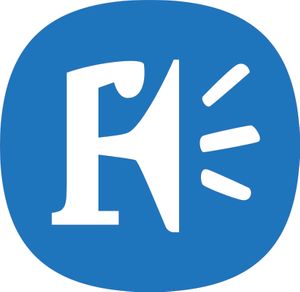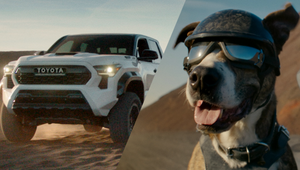
The VFX Factor: Pushing Beyond the Possible with Paul Krist

Paul is a visual effects artist and filmmaker with an architectural background. Since joining Framestore as a VFX Compositor, he has contributed to feature films, TV shows and commercials, including Detective Pikachu, Black Mirror (Netflix), and was recently one of the on-set supervisors for General Motors’ Super Bowl commercial, ‘No Way, Norway’. He has also worked on projects for household brands including Apple, Disney, Google and Toyota.
After studying Architecture at the University of Applied Arts Vienna (Angewandte), he graduated with distinction from the Masters program at SCI-Arc. He is an active member of the Visual Effects Society (VES).
LBB> There are two ends to the VFX spectrum - the invisible post and the big, glossy 'VFX heavy' shots. What are the challenges that come with each of those?
Paul> The invisible post is often underestimated. It can become very challenging and technical as the focus tends to be on ensuring the audience isn’t distracted by the element that is being altered, so everything needs to be perfect down to the last pixel.
A VFX-heavy shot presents a different set of challenges, often consisting of many elements that need to be integrated perfectly to interact with each other or the plate. For a compositor, this means having a well structured script that allows you to manage all of the elements that go into the shot. In both cases, real life references for how things should look or behave are crucial.
LBB> As a VFX person, what should directors be aware of to make sure you do the best possible job for them?
Paul> Communicating their vision well is really important for us as artists. This can include anything from a document that explicitly defines what the director envisions for each shot, or an outline for how a shot/sequence should feel as a solid starting point.
LBB> VFX is a true craft in the classic sense of the word.
Paul> I landed in the visual effects world through an unusual path. I studied architecture at different schools in Europe and the US, then finished my masters at the Southern California Institute of Architecture. During my studies I was always very drawn to the artistic side of architecture, designing buildings that were very complex in form. To achieve that kind of complexity architects appropriate visual effects software like MAYA. Over the years of my studies, I began using these different softwares more and more, creating animations and visualisations of my buildings, then also started making short films and art installations. My portfolio was very VFX-heavy by the time I graduated which helped me land an internship at Framestore. I spent two years working at Framestore in London before moving back to Los Angeles to work at our studio here.
LBB> Think about the very, very start of a project. What is your process for that? Do you have a similar starting point for all projects?
Paul> Usually we begin with a kick-off meeting alongside the producers to discuss timelines and milestones for the project. I then gather all important information and assets we have for the project and start setting up a structured template for my shots. Depending on the shot, I also like to look for real life references to source additional inspiration around how something could look so that I’m heading into the project with a specific goal for what I want to achieve.
LBB> We imagine that one of the trickiest things with VFX is, time issues aside, deciding when a project is finished! How do you navigate that?
Paul> The first goal is always to make our clients happy. That often means there is a director, an agency and the brand or studio client, so as artists we need to satisfy everyone's requirements. From my experience at Framestore, we don't stop there - we always try to push the shots beyond what’s possible in an effort to make them even more realistic. We are, in most cases, our toughest critics.
LBB> Is there a piece of technology or software that's particularly exciting you in VFX? Why?
Paul> I think Unreal Engine has had a big impact on the entire industry and offers a lot of new opportunities. The virtual production workflows are fascinating and Framestore is one of the companies that is pushing the possibilities in that field.
LBB> Speaking of that, how have you navigated your role during Covid? Was there a big shift to remote? Tell us about your experience.
Paul> Framestore did an excellent job on moving all of our artists to a remote workstation at the beginning of the pandemic to ensure that everyone was safe. Our technical team made sure we were able to function as efficiently as before in that time and allow us to deliver across projects of all scales.
LBB> Are there any lessons you've learned / experiences that you've had from working during Covid that you'll be looking to keep with you once things hopefully get back to some form of normality?
Paul> I think we found a very efficient method for regular artist reviews. We are viewing our shots together on each screen in the morning and are able to outline our goals for the day over Zoom. With the help of our network we are also able to stay in close contact with our team throughout the day.
LBB> How did you first get into the industry? What was your very first job in the industry and what were the biggest lessons that you learned at that time?
Paul> After my graduation I started teaching at an architecture school in Los Angeles while working on some personal art and VFX projects. One of Framestore’s Creative Directors saw my work and brought me on for an internship. From there, I immediately worked on some really big projects, including the ‘Destiny 2: New Legends Will Rise’ campaign, which was nominated for a VES Award. I also had the chance to work on my first feature film for Marvel's ‘Thor: Ragnarok’. I moved to London after my internship and worked for almost six months on my first TV show for National Geographic’s ‘Mars’ (Season 2). I was heavily involved in creating a lot of the Mars environments and later assembled the shots in comp, too. What I learned over these first months in the industry was that no matter the scale of the project or schedule requirements, it is always the attention to small details that make each shot feel real and believable.
LBB> What was your first creative milestone in the industry – the project you worked on that you were super proud of?
Paul> I’ve been given so many great opportunities, but I think I most enjoy those where I’m able to leverage some of my architecture experience, for example creating some of the environments for Mars. I am also very proud to have been on set for our recent Super Bowl project ‘No Way, Norway’ for General Motors.
LBB> From a VFX perspective, which ads have you seen recently that you've been particularly fond of and why?
Paul> I am particularly fond of our recent ‘Upstream’ spot for Toyota alongside Saatchi & Saatchi, which was a great example of brilliant and inspiring storytelling. The spot was shot with flooded environments and very dramatic lighting, all of which was enhanced by the work of our team.













